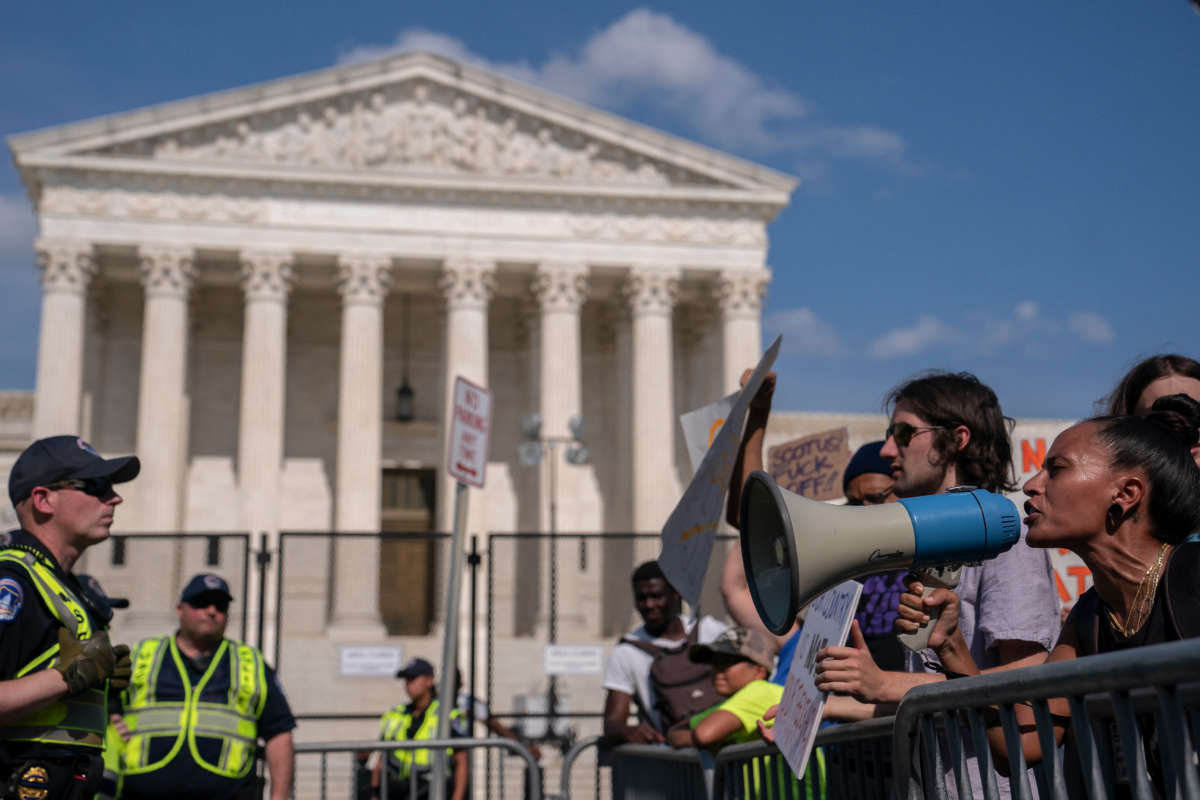The U.S. Supreme Court is more conservative than it has been for generations, according to an analysis examining its decisions this past judicial term.
The far right tilt is due in large part to Republicans successfully blocking what would have been a Democratic nomination in 2016, when former President Barack Obama selected now-Attorney General Merrick Garland to replace Antonin Scalia following the justice’s unexpected death; at the time, Republicans claimed that Garland’s appointment would be taking place too soon before the upcoming presidential election. When liberal Justice Ruth Bader Ginsberg died while former President Donald Trump was in office, however, Republicans confirmed Justice Amy Coney Barrett just days before the 2020 presidential election — a move that many have condemned as blatantly hypocritical.
As a result, a split Supreme Court from just a few years ago (composed of four liberals, four conservatives and one moderate) is now a 6-3 split in favor of the conservative bloc of justices.
According to an analysis by statistics professors Lee Epstein and Kevin Quinn, of Washington University in St. Louis and the University of Michigan, respectively, it has been several decades since the Supreme Court has been this conservative.
Per their research, in the 2021 judicial term, Republican-appointed justices were part of the majority opinion 86 percent of the time, while Democratic-appointed justices took part in 62 percent of the majority opinions issued — a 24-point gap. This gap is a 14-point increase from what it was just one term prior, and a 21-point increase from what it was 20 years ago, in 2002.
Nonunanimous rulings have been more commonplace this past year, with 72.4 percent of all decisions issued having at least one dissenting justice — the highest rate since 1979.
Within those nonunanimous rulings, 73.8 percent had outcomes that were deemed conservative-leaning, the highest level since 1931. In all cases examined, including those with unanimous rulings, 63.2 percent of outcomes were conservative — the highest level ever seen, out of the data that the researchers compiled dating back to 1920.
While the data shows definitively that the Court has taken a hard right turn, recent rulings on critical cases have also demonstrated its right-wing extremism. This year, the High Court undid nearly 50 years of abortion rights precedent when the conservative bloc overturned Roe v. Wade. The Court also handed down decisions that loosened gun laws in New York, curbed environmental standards and regulatory powers of the Environmental Protection Agency, and blurred the lines between church and state in a contentious school prayer case.
The Court’s far right turn — particularly its recent attack on bodily autonomy and abortion rights — is likely why public confidence in the institution has eroded to record lows. According to polling from Gallup, only 25 percent of Americans say they have either “a great deal” or “quite a lot” of confidence in the Court. That number is down 11 points from last year, and is the lowest rating the Court has received since Gallup started asking the question in 1973.
Media that fights fascism
Truthout is funded almost entirely by readers — that’s why we can speak truth to power and cut against the mainstream narrative. But independent journalists at Truthout face mounting political repression under Trump.
We rely on your support to survive McCarthyist censorship. Please make a tax-deductible one-time or monthly donation.
